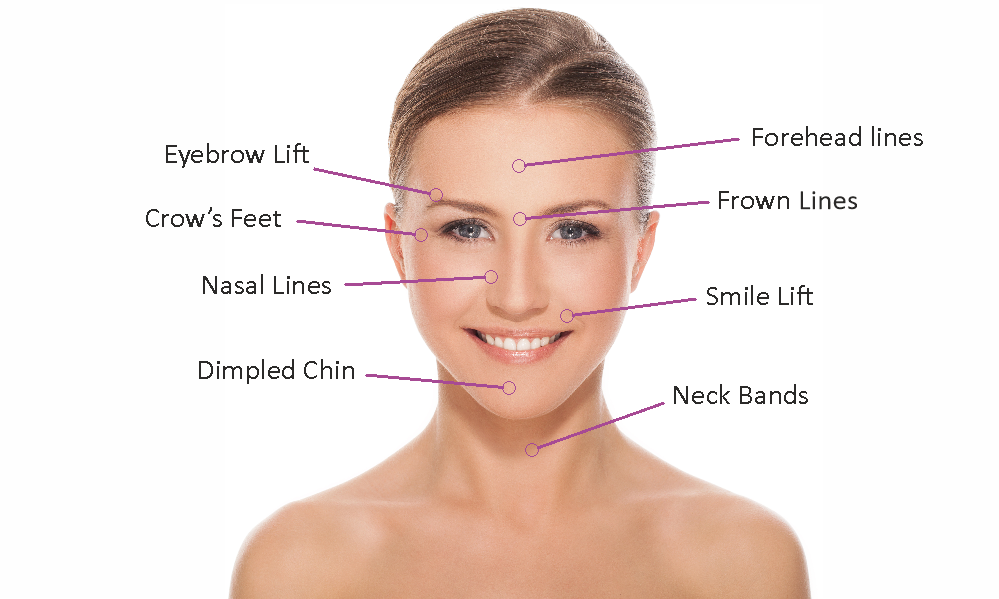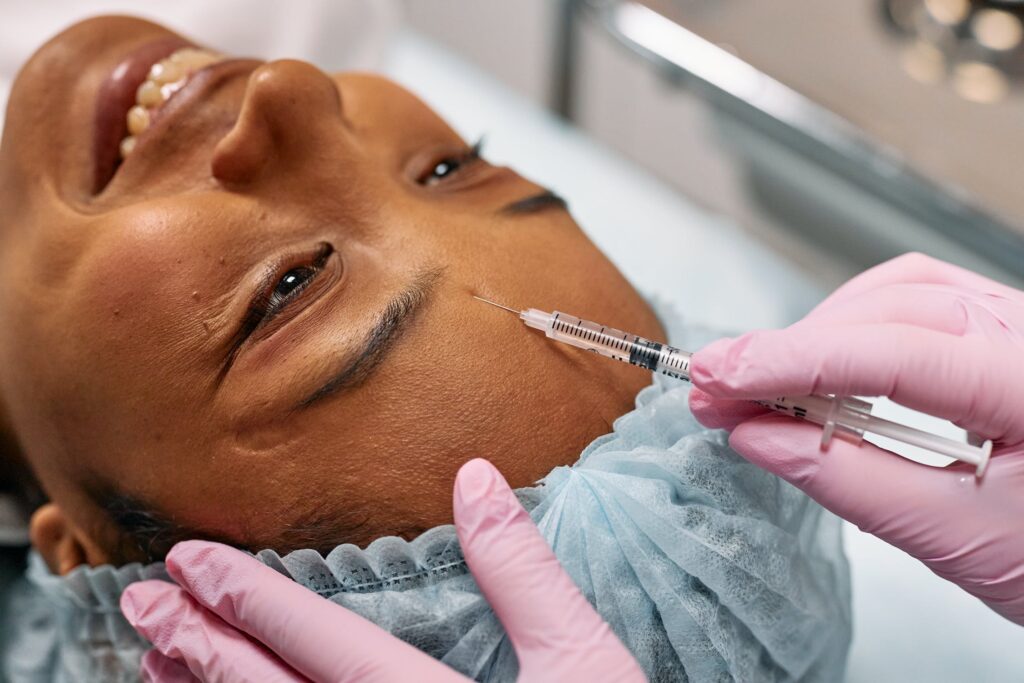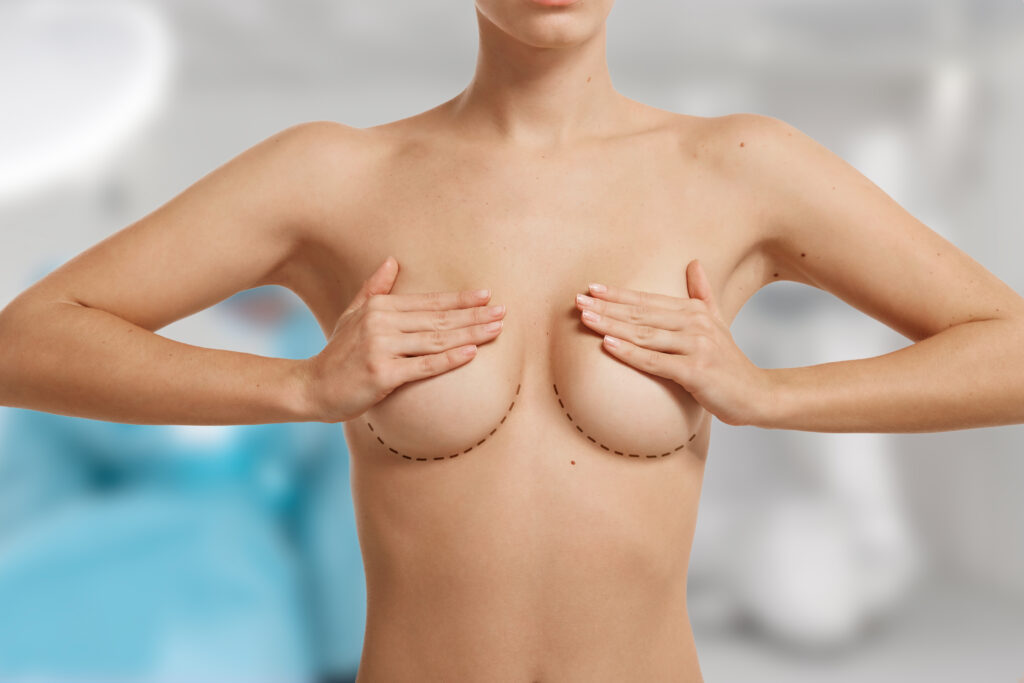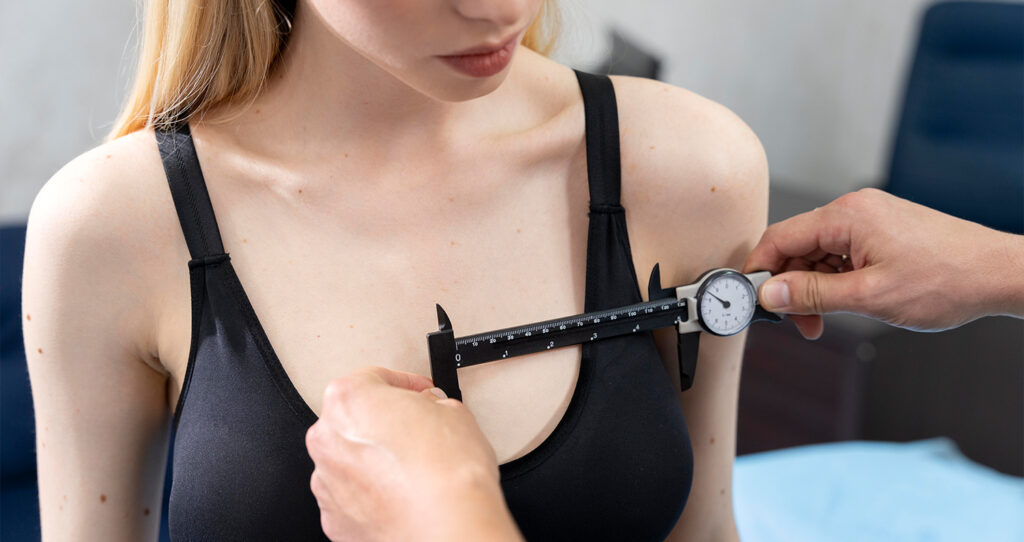If you want to be beautiful despite aging, you heard about botox. You are probably wondering: “What is botox?” and “How does it work?”.
Botox is the most widespread cosmetological procedure in the world. It is also used for treating many neurological conditions. In this article, we will help you to figure out the application, safety, and pros and cons of the procedure.
The author of this article is Dr. Tatiana Kobets. She is the owner of the cosmetological center “KeyMed” and has 18 years of experience in botulinum toxin injections.
What is Botox?
First of all, we need to understand that Botox is a trademark established by Allergan PLC, not the name of the treatment itself. In fact, Botox is the one of botulinum toxins on the market. It became a synonym of the procedure because Allergan PLC was the first manufacturer of this medication.
Botulinum toxin is a neurotoxin that blocks muscle activity.
Originally botulinum toxin was used to treat some ophthalmologic conditions. The history of botox use for cosmetics started in the 1980s.
Dr. Carruther injected a neuromodulator to treat blepharospasm. She noticed that the medication had relaxed muscles around the eyes and had removed wrinkles. It inspired her to share the results with her husband, who was a cosmetic dermatologist. The couple wrote the first publication about the cosmetic use of botulinum toxin.
How does botulinum toxin work?
Botulinum toxin is a neurotoxic drug. It blocks signal transmission between neurons and muscles. Beauty procedures use botulinum toxin A.
Botulinum toxin is produced by the bacterium Clostridium botulinum which causes botulism. People can often get the toxins by eating home-canned meat, fish, or mushrooms. The toxin causes blockage of muscle function and high doses can stop the respiratory system from working and causes death.
The doses used for medical and cosmetic procedures are too small to cause poisoning and intoxication.
- When some time passes after the procedure the activity between neuron and muscle activity is restored, so you can make movements again.
What is botox used for?
Reduction of wrinkles: This is the most common way to use botox. Usually, botox is used to treat wrinkles on the face and neck. Treatment areas include:
- Forehead
- Frown lines
- Lines around the eyes
- Lines around the lips
- Lines near the nose zone
- Neck to relax plastisma muscle

Treatment zones with botulinum toxin injections
Botox has a wide range of applications except for the reduction of facial wrinkles. The conditions include:
Cervical dystonia: This is a painful condition while neck muscles contract involuntary causing the head to twist, and tilt forward and backward. Botulinum toxin reduces pain and immobilizes nerves in neck muscles.
Lazy eye or amblyopia caused a reduction in vision in one eye early in life because of muscle imbalance. Usually, the weaker eye looks inwards or outwards. In some cases, botox injection can be used to weaker the eye muscles to make the eye go back to its normal position.
Сerebral palsy is a motor disability when a child develops weakness and issues with using the muscles. Botox injections are used to relax overactive muscles in children.
Hyperhidrosis is a condition when excess sweating occurs without exercising or hot temperature. Botulinum toxin injections prevent sweating in the treatment area as they block overactive neural signals to stimulate sweat glands.
Chronic migraine that lasts over 15 days per month and is caused by spasticity can be treated with botulinum toxin. Doctors think that Botox blocks transmitting of the pain signals from the brain.
Bladder dysfunction means that a bladder is overactive. A person might urinate 8-10 per day, experience incontinence, and feel a sudden urge to urinate. Botox is used to relax bladder muscles to avoid incontinence.
Eye twitching that is caused by the contraction of muscles around the eye can be treated with Botox injections too. Botox is used to relax the facial side that is too tight.
Bell’s palsy causes paralysis of the muscles on the one face side.
Botox also can be used to treat gingival smiles, when too much gum is shown while a person is smiling. Moreover, botulinum toxin is used for treating bruxism. It is a condition where a person grinds or clenches teeth.
Are you a good candidate for botox facial injections?

There is no specified age for starting treatment. The main indication for the treatment is the formation of mimic wrinkles.
Pro tip: There is no need to inject botox before the lines are visibly formed. However, you shouldn’t postpone the decision if you have already noticed some lines on your face. With aging, wrinkles will get deeper, and it will get impossible to treat them with botox only.
As botulinum toxin is a licensed medication, only doctors can apply it even for cosmetic use. Read how to select the right specialist to get the expected results.
There are also some categories of people who are less sensitive to botox injections:
- Men usually need 1.5-2 times higher doses of botox because they have more nerve endings and stronger muscles.
- Previously treated botulism. The immune system has already developed an immune reaction against botulinum toxin, and the medication won’t work.
- If you were previously vaccinated against botulism, you might have no effect from the procedure.
People after 70 should also be cautious because of natural muscle atrophy. If the botulinum toxin is injected into weak muscles, the patient is at risk of getting unexpected side effects.
Side effects
Botulinum toxin for esthetic use is a completely safe procedure. Usually, side effects are minor and limited to swelling, bruises, and pain in the injection sites.
Some patients also report mild headaches that resolve in a few days.
Additionally, some people are afraid of changes in mimics. They feel that the face looks frozen or has some uncomfortable feelings while expressing emotions. This also passes a few days after a person gets used to new feelings.
Mild side effects like dropped or swollen eyelids and dropped eyebrows are rare. It is usually because of the wrong injection procedure when the specialist doesn’t take into account individual anatomy features.
If side effects don’t resolve in 7-14 days, you should report it to the doctor.
Contraindications
There are a few contraindications for botox. Among them are:
- Pregnancy
- Lactation
- Lambert–Eaton myasthenic syndrome
- Inflammation process in the treatment area
- Adverse dermatitis on the treatment site
Non-severe acne is not a contraindication of the botox injection. However, if the treatment zone has pimples, noodles, or cysts with pus inside you should heal them before the botulinum toxins procedure.
Pros and cons of getting botox injections
| Pros | Cons |
| ✅ The procedure is almost painless because thin microneedles are used for the procedure. ✅ The procedure is fast. After the primary consultation, it takes half an hour to make the procedure. The injections themselves take up to 5 minutes, other time is spent on filling the documents and preparation. ✅ You will see the maximum effect in 7-10 days after the procedure and the results last up to 3-6 months. Depending on the depth and individual mimic features wrinkles wear off in 2-4 days. ✅ With Botox, you can wean muscles from excess contractions, which will prevent wrinkles formation even after the botox effect wear off. This benefit you will feel for 1,5-3 after the effects end. ✅With aging, you will have fewer wrinkles than other people of the same age. ✅ No recovery period. Injection sites may look like small red pimples which disappear in an hour. | ❌ The results are temporary. It lasts 3-6 months ❌ To achieve the best results without side effects you need to receive the procedure only from a professional and experienced doctor. ❌ If serious side effects like asymmetry happen rarely. However, you will need to wait for a couple of months to wear off the effect (or use special techniques to remove bad botox results) |
Summary
Botox aka botulinum toxin injections is the most widespread procedure among all esthetic treatments. Discovered as a medication for specific ophthalmology conditions, nowadays it helps to remove wrinkles and treats neurological issues.
Botulinum toxin for esthetic use is used for over 30 years and still has no alternative. It works by blocking muscle activity. As a result, botox prevents the formation of new wrinkles and removes the existing ones.
While the treatment is safe, it has minor side effects. The most common are swelling, bruises, pain in the injection sites, and headache.
FAQ
😊 When should I start Botox injections?
There is no specific age to start botulinum toxin injections. The only indication is the formation of visible wrinkles and lines even with relaxed muscles. If you notice these folds on the face, it is the main sign to appoint a consultation with a doctor. Botox as a preventive procedure has no sense at all.
🤔 Is Botox safe?
Yes, doctors use microdoses for all esthetic procedures. Small doses of botulinum toxin don’t cause any adverse side effects. For neurological applications, doctors use up to 10 times bigger doses than for esthetic use.
💉 Are botox injections painful?
Not really, it feels like mosquito bites as tiny small needles are used for botulinum toxin injections. If you are too afraid of the pain you can ask a doctor to apply some anesthetic gel to the treated area, however, there is no need for it.
⚠️ What procedures cannot be combined with botox injections?
You should avoid revitalization, liftings, laser procedures, pilings, mesotherapy, and microcurrents in the treatment area. These procedures will demolish botox effects and should be done between botox procedures.




